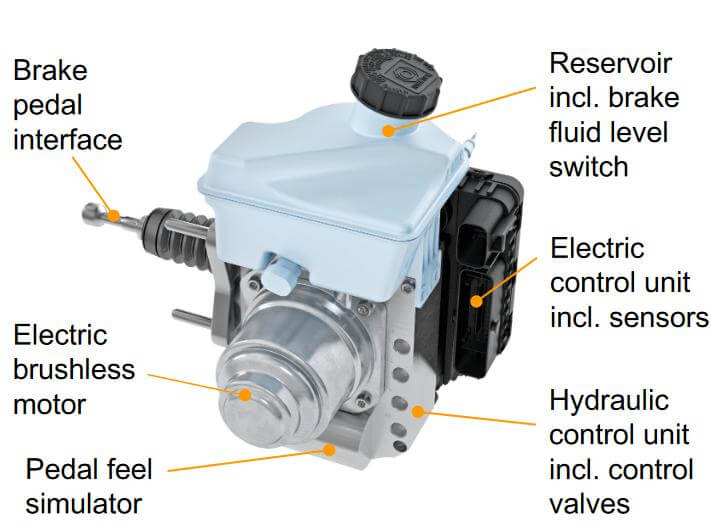What is an electronic brake force distribution system
Electronic brake force distribution (EBD) helps your car stop in emergency situations
Electronic brake force distribution is designed to apply the correct amount of braking force to each wheel to stop the vehicle during hard braking and emergency braking situations while maintaining stability control
How brakes worked before EBD
On older vehicles the front brakes perform about 70% to 80% of the braking power. That’s because the front weighs more than the rear (engine, transmission, driver, passengers, etc) and during hard stops vehicle weight transfers forward. Forward weight transfer causes nose dive which shifts even more weight onto the front brakes. The rear brakes simply prevented rear end lift and aided in stability.
Mechanical proportioning valves reduced rear end lift
Older vehicles also used a variable proportioning valve located in the rear of the vehicle. The valve was mounted on the rear axle, with a sensing rod connected to the body. During hard stops, as body weight shifted forward causing nose dive, the rear of the vehicle would rise. The sensing rod detected this rear end lift and moved a mechanical valve that diverted more brake fluid pressure to the rear brakes. The added pressure neutralized rear end lift and weigh transfer.
Automatic emergency braking (AEB) and stability control changed things
Late model vehicles still carry more weight in the front of the vehicle. But they now have automatic emergency braking that’s designed to apply the brakes hard enough and rapidly enough to prevent a crash.
During an AEB event the hard braking and forward weight transfer can overwhelm to front brakes, causing the tires to lose traction, even with ABS assistance.
The most sensible way to reduce weight transfer and nose dive is to apply more rear braking power and apply it sooner in the process.
EBD senses hard braking and immediately distributes more braking power to the rear wheels to prevent rear end lift, forward weight transfer and nose dive. The result is more even braking from front to rear and faster stopping..
How EBD works
EBD uses the same wheel speed sensors as the ABS system. It also uses sensors to detect rapid deceleration and body weight shift. To redistribute the braking force, the system uses Brake Force Modulators built into the ABS valve unit.
How EBD affects brake pad wear
In older vehicles where the front brakes performed 70% to 80% of the braking, it was normal for the front brakes to wear out twice as fast as the rear brakes. With EBD, shops are seeing equal wear front to rear and in some cases, more rapid rear brake pad wear. How fast the rear pads wear is directly related to how hard the driver brakes.
©, 2023 Rick Muscoplat
Posted on by Rick Muscoplat

